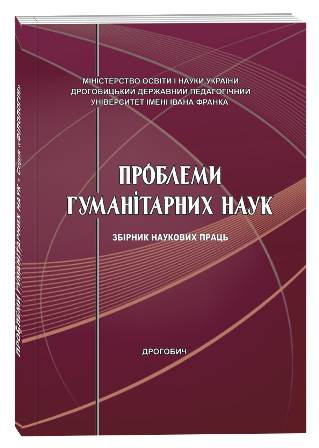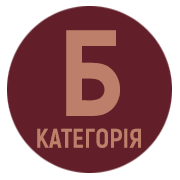LINGUISTIC MEANS OF REALIZING THE SEMANTICS OF NEGATION IN THE TEXTS OF GERMAN FOLK TALES
DOI:
https://doi.org/10.24919/2522-4565.2023.58.4Keywords:
fairy tale discourse, category of expressiveness, implicit expression of negation, explicit expression of negationAbstract
The aim of the article is to analyse the linguistic means of realising explicit and implicit meanings of negation in the texts of German folk tales. The article reveals the peculiarities of the functioning of the category of negation in German fairy tale discourse from the standpoint of the communicative linguistics. The methodological basis of the study is the methods of component and contextual analysis, linguistic observation and description. The article proves that the category of negation is closely related to the evaluative category on the basis of German folk tales. It has been determined that negation forms a character's characterisation and conveys his/her emotional and psychological state, contributes to the enhancement of textual dynamics and the emphasis of plot conflicts. That is why negative sentences are especially informative in the texts of folk tales. It is noted that in German there is a wide range of different means of expressing negation, which function at different language levels. It has been defined that explicit and implicit forms of expressing negation are used to express negative communicative actions in the texts of German folk tales. It is emphasised that the most common means of expressing negation in the texts of German folk tales at the lexical level is the negative particle nicht, which can be strengthened by the particle “gar”, the adverb “mehr”, which contributes to the emotional colouring of the statement. At the morphological level of the language, the prefix “un-“ is considered, which is involved in the formation of new lexical items with the negative meaning, which allows expressing the meanings of absence, inconsistency, and negative assessment. It has been found that at the level of lexicon, fairy tale discourse is characterised not only by explicit negation, but also by implicit negation. These lexical items are already negated in their semantics. The implicit expression of negation is also realised in fairy tale discourse by interjections, rhetorical questions, and affirmative sentences, which contributes to the vivid emotional intensity and expressiveness of fairy tale discourse. Prospects for further research are seen in the further study of the opposition of affirmation/ negation, in the problem of their interaction and interpenetration.
References
Вінтонів М., Вінтонів Т., Мала Ю. Синтаксичні засоби експресивізації в українському політичному дискурсі. Вінниця : ТОВ «ТВОРИ», 2018. 336 с.
Загнітко А. Сучасний лінгвістичний словник. Вінниця : ТВОРИ, 2020. 920 с.
Краснобаєва-Чорна Ж. Функційно-модельні вияви заперечення у фраземіці. Типологія та функції мовних одиниць : наук. журн. на пошану член-кореспондента НАН України Івана Романовича
Вихованця. Луцьк : Східноєвроп. нац. ун-т ім. Лесі Українки, 2015. № 2 (4). С. 94–104.
Паславська А. Заперечення як мовна універсалія : принципи, параметри, функціонування. Львів : Видавн. центр Львів. ун-ту ім. І. Франка, 2005. 290 с.
Паславська А. Заперечення та сфери його дії : семантика, синтактика, прагматика, просодика : дис...д-ра філол. наук. Київ, 2006. 420 с.
Сотникова С. Мовні засоби комічного в німецьких народних казках : автореф. дис. …канд. філол. наук. Харків, 1996. 17 с.
Чрділелі Т. Категорія заперечення як компонент мислення та мови в зіставному вимірі. Knowledge, Education, Law, Management. 2020. № 3 (31). Vol. 1. Р. 68–76.
Kinder- und Hausmärchen [Gesammelt durch die Brüder Grimm]. Düsseldorf und Zürich : Artemis & Winkler Verlag, 1995. 845 S.
Wunderlich D. Methodological remarks on speech act theory. Speech act theory and pragmatics / eds.John R. Searle, Ferenc Kiefer, Manfred Bierwisch. Dordrecht : Reidel, 1980. S. 291–312.



